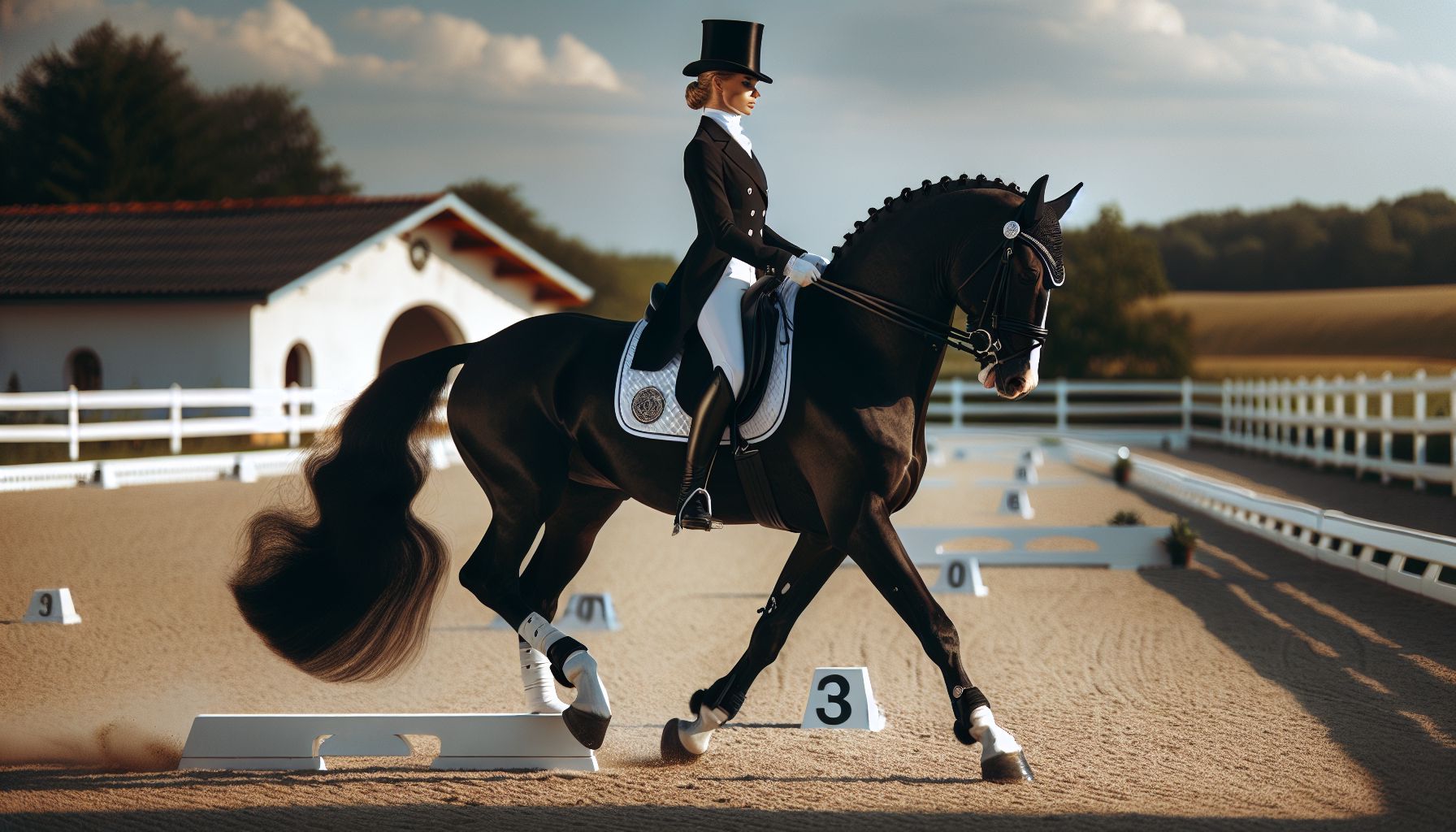Dressage. It might sound like a fancy French word for a type of salad dressing, but in reality, it is a refined and elegant form of horse riding that has been practiced for centuries. Whether you’re an avid equestrian or someone who has never had the pleasure of being in close proximity to a horse, dressage is an art that deserves recognition. In this article, we’ll take a closer look at dressage, uncover its history, explore its intricacies, and discover why it continues to capture the hearts of horse enthusiasts around the world.
A Brief History of Dressage
The origins of dressage can be traced back to ancient Greece, where the horse was not only an essential means of transportation but also a symbol of power and grace. The Greeks recognized the importance of training their horses in order to maximize their potential in both war and competition. They developed a system of movements and exercises that would not only strengthen the horse’s physique but also enhance its maneuverability.
As time passed, dressage continued to evolve throughout various civilizations. It gained prominence in Renaissance Europe, where it became an art form associated with aristocracy. With the advent of the modern Olympics in 1912, dressage became an official equestrian discipline, highlighting its importance and relevance in the sporting world.
The Art of Dressage
At its core, dressage is a partnership between horse and rider, as they gracefully execute a series of movements and figures in perfect harmony. Imagine a ballet, where horse and rider communicate through subtle cues and imperceptible shifts in weight. The goal is to achieve a harmonious connection, where the horse seems to respond to the rider’s thoughts before they are even conveyed.
Dressage is often referred to as “horse ballet” for a reason. The movements, known as “dressage figures,” are analogous to choreographed steps in a ballet routine. From the pirouette, where the horse pivots elegantly on its hind legs, to the passage, a highly collected and elevated trot, each movement requires immense skill and coordination from both horse and rider.
The Training Process
Achieving such harmony does not happen overnight. Dressage training is a patient and meticulous process that requires years of dedication and practice. It begins with the selection of a suitable horse, one with the potential to excel in the specialized movements of dressage.
The training process comprises three main stages: the basic training, the progressive training, and the competitive training. In the basic training phase, the horse learns to respond to the rider’s aids, such as leg pressure, weight shifts, and rein contact. As the horse becomes more proficient, the training moves on to more advanced movements, involving lateral work, collection, and extension. Finally, in the competitive training phase, the horse and rider refine their movements and perfect their timing in preparation for competitions.
The Perfect Partnership
To achieve excellence in dressage, horse and rider must work together as one. It is a testament to the beauty and strength of the bond between these two creatures. Dressage requires patience, discipline, and immense trust from both parties involved.
The rider must learn to communicate with the horse subtly, relying on light aids and precise timing. Each movement is initiated by the rider but executed by the horse, requiring a deep understanding and mutual trust. The horse, on the other hand, must learn to respond to the rider’s cues with precision and grace, displaying athleticism, obedience, and a willingness to perform.
The Reach of Dressage
Dressage is not limited to a particular region or culture. It is a sport enjoyed by riders and spectators worldwide. From the prestigious competitions held at renowned equestrian centers to the local shows held in small communities, dressage continues to captivate audiences with its beauty and grace.
The pinnacle of dressage competition is the Olympic Games. Every four years, the world’s top dressage riders gather to showcase their skills and compete for gold. The performances at these events leave audiences in awe, as horse and rider execute seemingly impossible movements with effortless grace.
Dressage Beyond the Arena
While dressage is predominantly known as an equestrian sport, its influence extends beyond the confines of the arena. The principles and techniques used in dressage are often utilized in other equestrian disciplines, such as eventing and show jumping. The training methods employed in dressage focus on developing a horse’s balance, strength, and responsiveness, making it an invaluable foundation for any equestrian pursuit.
The Magic of Dressage
There is a certain magic to dressage that captivates and enchants those who witness it. It is the combination of precision and elegance, strength and grace, that makes dressage a true art form. From the heart-stopping performances at international competitions to the quiet moments of connection between horse and rider in the training arena, dressage is a dance that transcends language and culture.
In the world of dressage, horse and rider become one. They create a symphony of movement, displaying a level of harmony that is both breathtaking and awe-inspiring. It is this harmony, this profound connection between human and animal, that continues to draw people to the art of dressage.
So, the next time you find yourself with the opportunity to witness a dressage performance or try your hand at riding a horse, take a moment to appreciate the beauty and skill behind this centuries-old art form. Dressage is more than just a sport; it is a testament to the incredible bond between horse and rider, and a reminder of the power of trust, patience, and mutual respect.
